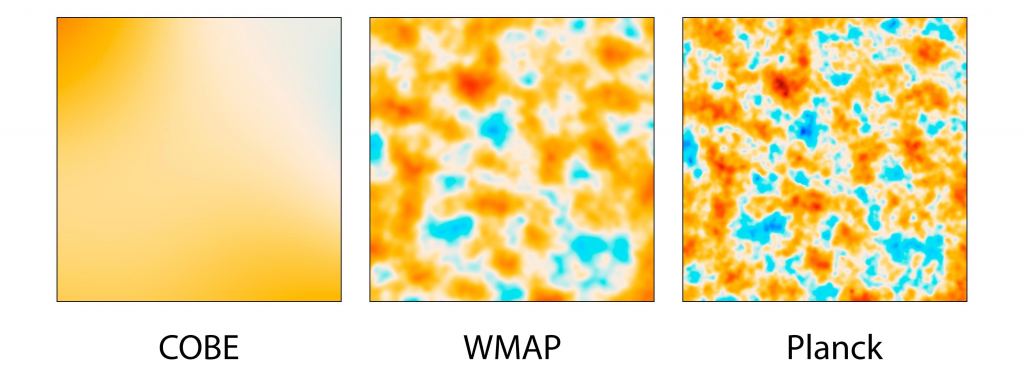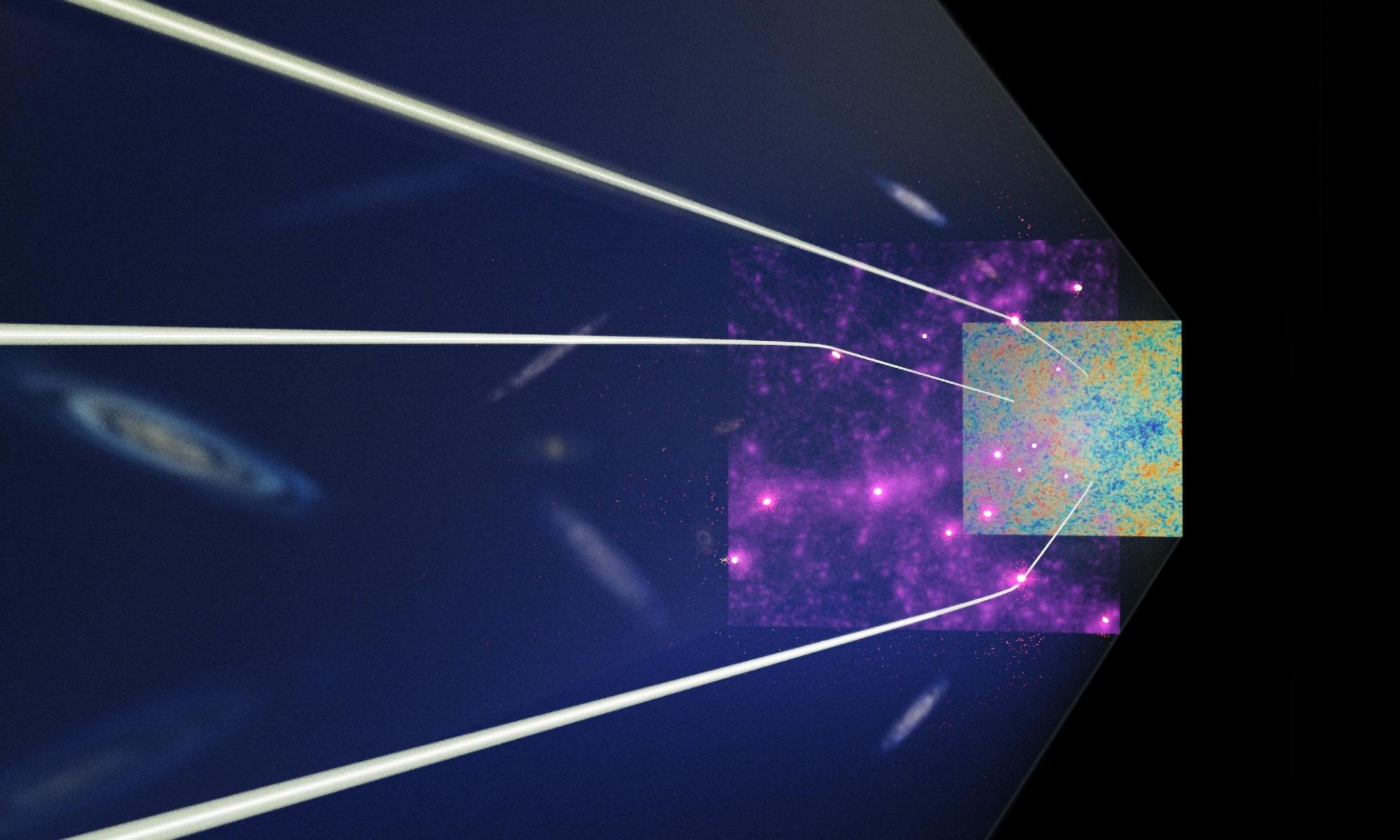Although the particles of dark matter continue to allude us, astronomers continue to find evidence of it. In a recent study, they have seen its effect from the edge of visible space, when the universe was just 1.5 billion years old.
Dark matter doesn’t emit its own light, nor does it absorb light like a dark cloud. But it does affect light gravitationally. So clumps of dark matter create a gravitational lens that deflects and focuses light. Astronomers have long used this effect to map dark matter within galactic clusters. You can even see this lensing effect in the recent Webb deep field images. The light from more distant galaxies is warped by the mass of closer galaxies, which astronomers can map to calculate the distribution of dark matter in those closer galaxies.
But in this latest study, the galaxies are so distant that there aren’t really any more distant galaxies. Certainly none bright enough that we can see their lensed light. So instead, the team used the light from the cosmic microwave background (CMB). To map dark matter, the team used data from the Subaru Hyper Suprime-Cam Survey (HSC), and identified about 1.5 million faint and distant galaxies. They then used data from the Plank satellite to see how CMB light was deflected. From this, they created a map of dark matter in the early universe.

It’s the most distant measure of dark matter ever made, and it opens a possible crack in our current model of the universe. In the standard cosmological model, known as the LCDM model, dark energy drives the expansion of the universe, striving to push galaxies apart, while the gravitational attraction of matter and dark matter cause galaxies to clump together. According to LCDM, the scale at which we observe fluctuations in the cosmic background drives the scale at which galaxies cluster together, which tells us how densely galaxies should be clustered in the early universe. In this latest work, the amount of galactic clustering in the early period is slightly less than predicted by the LCDM model.
The uncertainty of the team’s measurements means their result isn’t conclusive. It’s possible that they simply under measured the clumping scale. But if it’s right, it suggests that the laws of the universe were a bit different 12 billion years ago. Combined with observations that show a tension in the rate of cosmic expansion, they could be on to something.
There are a lot of possibilities. But the biggest success of this work is that we now have actual data. It’s a big first step, and as we get more data from telescopes such as the James Webb Space Telescope and Vera Rubin Observatory, we should be able to solve this mystery, and finally learn if the cosmic laws really were different in the dark and distant past.
Reference: Miyatake, Hironao, et al. “First Identification of a CMB Lensing Signal Produced by 1.5 Million Galaxies at z ~ 4: Constraints on Matter Density Fluctuations at High Redshift.” Physical Review Letters 129.6 (2022): 061301.


The Subaru Hyper Suprime-Cam public data release 2 difference at 1.4 sigma significance isn’t statistically significant in relation to the 5 sigma threshold.
But if we want to compare with the Dark Energy Survey 3-year results “Cosmological Constraints from Galaxy Clustering and Weak Lensing” [ https://arxiv.org/pdf/2105.13549.pdf ] they contain high-z data too and lie closer to Planck [fig. 19). They also defer detailed comparisons to future work as the principal efforts use different methodology (and this adds yet another). “In addition to DES, other concurrent photometric surveys HSC [27,36] and KiDS [28,102] are also pursuing precision weak lensing measurements using galaxy shapes. These three surveys span a range of depth and survey area tradeoffs, with HSC being deepest, DES widest, and KiDS using the widest wavelength coverage.”
[The DES 3-year results improved the consistency. “We find better agreement between DES 3 × 2pt and Planck than in DES Y1, despite the significantly improved precision of both.” Adding low-z surveys improved consistency even more “and slightly less than 4? offset relative to the local h by SH0ES” – the integrated unit less Hubble constant h = 0.680 +0.004 – 0.003.]
“4? offset” = 4 sigma offset.